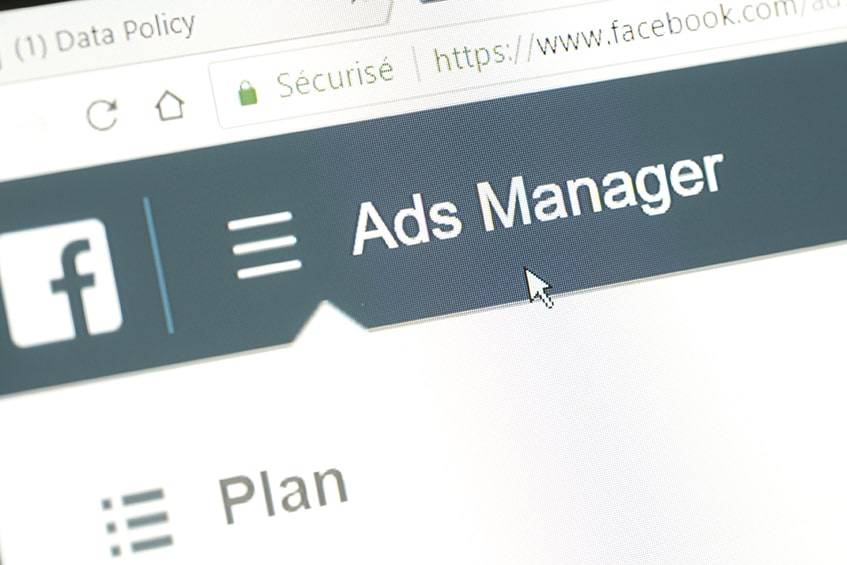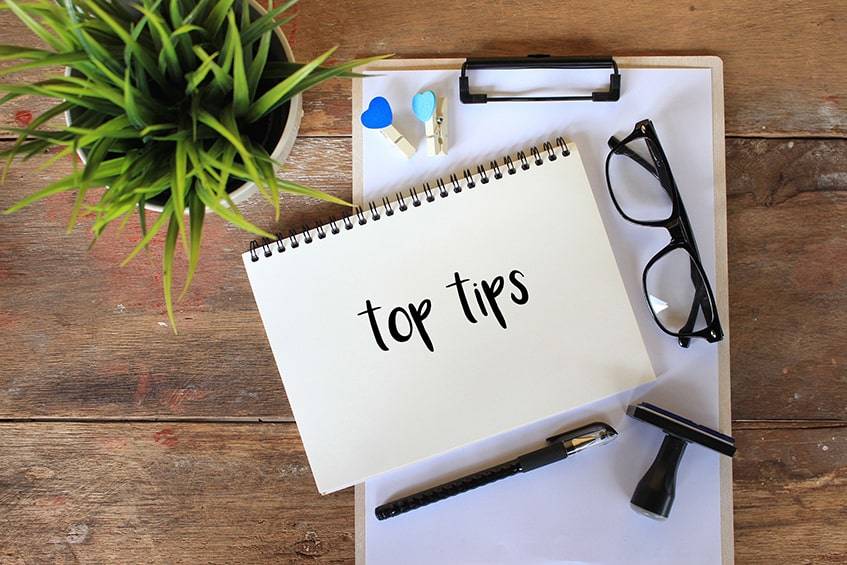Facebook ads are some of the most inexpensive options to advertise one’s business in 2023. The platform even encourages this by limiting the organic reach of most pages. So, those who want to get more leads, increase brand awareness, and ultimately boost conversions will see the usefulness of investing in this tool. Here is an in-depth guide of everything one has to do to go from newbie to expert.
Table of Contents
Facebook Ads: What They Are and How They Work

They are one of the many tools that FB offers to help promote and support a business. The main difference with other functions is that this one is paid. Users choose a goal, such as having more likes, conversions, etc., and then let the platform do its magic.
It is possible to promote posts, sites, apps, pages, and more. They will appear in many parts of the website, like the news feed, the messenger app, and the sidebar. Every Facebook ad can be targeted to different audiences based on their age, likes, interactions, location, the news they read, and profile info, among others.
Types of Facebook Ads: A Detailed Analysis

When learning how to create a Facebook Ad, users are faced with a difficult choice. They have to select the type of advertising they need. This is a rather difficult thing to do without proper knowledge and support. So, here goes an in-depth review of each of them.
1. Image Ads: Start with the Basics
This type of Facebook ad is the best option for those who are just getting started. It is very simple since it can be set up with just a few clicks. But it can still be creative and catchy.
Headline: Up to 25 symbols.
Link description: Up to 30 symbols.
Body text: Up to 125 symbols.
Campaign objectives: Not compatible with video views.
2. Video Ads: Memorable Media
These are shown in the feed, news, events, stories, or even in the middle of other videos. Despite their name, it is also possible to use GIFs in this type of Facebook ad.
Headline: Up to 25 symbols
Link description: Up to 30 symbols.
Body text: Up to 125 symbols.
Campaign objectives: Not compatible with catalog sales.
3. Slideshow Ads: Great Results with Simple Implementations
This Facebook Ad is ideal for those who have short clips, images, and copy and want to create more complex media. It is also an option to pick the photos that the tool provides. They are optimized to work well on slow connections.
Headline: Up to 25 symbols
Link description: Up to 30 symbols
Body text: Up to 125 symbols.
Campaign objectives: Applicable to all
4. Carousel Ads: Creativity for Catchy Ads
This format is great for those who have great images of their products. It is an even better idea to use it to create a long photo by splitting a long pic into many parts and putting them side by side. This is a very effective eye-catcher.
Headline: Up to 25 symbols
Link description: Up to 20 symbols
Body text: Up to 125 symbols
Campaign objectives: Not compatible with engagement and video views
5. Video Poll Ads: Ideal for Youngsters
These ads are compatible only with the app. So, think carefully about the demographics before implementing them. They are still in their infancy, but recent studies show that they are great to boost brand awareness and promote events.
Headline: Not applicable
Link description: Not applicable
Body text: Not applicable
Campaign objectives: Works with all of them
6. Collection Ads: Get Them to Buy
These ads are also exclusive to the app. So, they work better for younger users. They allow showcasing up to five products together with a button to buy.
Headline: Up to 25 symbols
Link description: Not applicable
Body text: Up to 90 symbols
Campaign objectives: Compatible with traffic, conversions, catalog sales, and store traffic
7. Lead Ads: Build Your Customer Base
When learning how to create a Facebook ad of this type, remember they are designed to get much info with few taps. This is why they are only available for mobile. This Facebook Ad is ideal for getting newsletter subscriptions and gathering data about potential clients.
8. Instant Experience Ads: Fast and Flashy
This new type of Facebook Advertising offers a much better user experience than a regular landing page. They load 15 times faster and are much more flashy since they cover the whole screen.
Text: Up to 500 words.
Campaign objectives: Not compatible with lead generation, catalog sales, and messages.
9. Dynamic Ads: Retargeting at Its Best
Facebook Advertising also offers a retargeting feature in this category. Sometimes, some people show interest in one of the items in the store, or add them to their cart but do not finish the purchase. In these cases, the platform will remind them of the product to make sure they complete the action.
10. Stories Augmented Reality Ads: The Latest Tech in the Field
These ads allow users to engage with the brand more realistically. Though they are quite new, many users have already tried them and said that they liked these ads. A good example of how to advertise with them would be letting people try on makeup for a brand of cosmetics.
11. Playable Ads: Entertain to Be Known
This is another sort of interactive Facebook Ad. It allows companies to create a game in which users can interact with brand content in a fun way. They are a great way to create awareness of a product or company memorably.
How to Advertise on Facebook: A Pro’s Approach

Once the business page has been set up, users can start running ads right away. Advertisers take different approaches to do this. But still, there are some basic steps that everyone has to follow if they want to get results. Here is an in-depth step by step guide on how to advertise on Facebook.
#1. Define Your Goals First
The first thing to decide is the objective of the campaign. Without a firm goal, the money and the effort will go to waste. The platform gives the user 15 options to choose from. Let’s examine them in detail below.
- Awareness
Brand awareness
As the name shows, the campaigns related to awareness try to make the company famous. The idea is to attract more traffic to one’s website. And to make the logo, colors, and quality well known.
Reach
This option is more suitable for limited offers. Or other elements that last a short time. The idea is to bring more exposure to that promotion and bring more audiences, too.
- Consideration
These goals are usually in the middle of the funnel. That is to say, these are people who are already in the audience but not yet clients. So, the objective is to give those persons more info so they can acquire one’s product or service.
Traffic
In case there is any doubt, this category aims to bring more traffic to the company’s website. And social media networks can be great for that, in case the ad has attractive copy and visuals.
Engagement
Nobody feels assured when seeing a network without any likes, comments, or shares. That is why this is essential, too: attracting more users who will engage with the posts on Facebook.
App Installs
Apps are crucial parts of one’s life today. So, companies who have developed one should also want their clients or partners to download it from their website.
Video Views
These ads are, most of the time, videos. These are powerful resources to depict one’s brand, stories, products, services, and more. So, the idea is to bring more and more views to those visuals.
Lead Generation

Everybody wants to turn that audience into clients. Almost at the end of this marketing section is lead generation. And this can be achieved by asking info from these people with newsletters or polls.
Messages
Finally, the messages function tries to attract more customers. This wants them to send a personal text so the seller can engage in a conversation and display their products.
- Conversion
The last stage of the funnel is called Conversions. In this part, the future client finally buys the product and becomes a customer. So, all the efforts of the marketers are directed to this goal.
Conversions
In this type of text, it is crucial to include Call to Actions. These are short pieces of info that try to make people act. This could be buying a product, registering for the newsletter, downloading a file, etc.
Catalog Sales
As the name shows, the idea is to promote the catalog of the company to sell more. An example could be for a fashion store to show their clothes for winter, summer, spring, and other options.
Store Traffic
In case the business is not online but also has physical offices. This tries to attract more visitors and people who live near the store to come and buy in person.
#2. Select Your Audience
Those who want to be a success in this field have to define the audience. It is the key element that will drive the whole marketing campaign and one of the first things to focus on when learning how to advertise on Facebook. There are a lot of categories to consider when segmenting.
To name a few, these are:
- Place where they live. The location is crucial. In particular, if the company is selling goods that do not include delivery. These filters are the country, city, and even zip code.
- Age.
- Gender. At times, the goods or services are better suited to a female or a male audience.
- Languages. It’s of no use to make a Facebook ad in English for persons who only speak Spanish.
- Interests. Maybe the user does not like the niche the company is in, so it’s better not to show them anything.
- Behavior, and more.
Use those filters wisely. And keep an eye on the potential reach of the publicity. If it’s too restricted, then nobody will ever see it.
#3. Create the Facebook Ad Profile

Now, what should people do to get started? Are there any steps to take before the Facebook ad goes live.
- Build the basics. The first step, of course, is having a Facebook Business page. In that network will be all the info and content about the brand. After this, it is time to set up what is called a Business Manager. Without it, it will be impossible to run ads for this firm. The login will be the same for both accounts.
- Install the Facebook Pixel. It will give the owner a lot of info about the people who visit the site and the audience in general.
- Define the audience. As explained above, defining who is going to be the public is crucial for success. Today, there are a number of tools that can help with these parameters.
- Finally, make an ad out of a post. This social network will suggest top-performing images so they can become ads. But the marketer can also choose on their own what they want to display.
All in all, these are the primary tools needed for Facebook advertising. The steps are simple and easy. And the interface will guide anyone who never did it in the past.
#4. Where Is It Better to Run the Campaign?
There are some sections where the ads can appear. Some of them are Messenger, the feed, Instagram, or the Audience Network. It’s not feasible for most companies to pay for them all, so how is it better to conduct Facebook advertising?
1. In the Feed
The most traditional place to create a Facebook ad. People will see it when they enter their profiles and scroll down their feeds. It will work in both mobile and desktop versions.
2. At the Right Corner
This is another option when it comes to the feed of the social media network. Yet, it will only work for those who are exploring the site on their laptops. They are of no use in mobile devices.
3. Facebook Video Feeds
Most of the public using the site today watch videos during their free time. So, there’s no better place to put publicity than in the middle of these materials. Especially in the longer ones.
4. Instagram Is an Option
A few years ago, these two websites merged, and they are one of the same today. This means that, through Facebook ads, one can also make use of publicity on Instagram.
5. On Messenger
Though many users today access Whatsapp for their messages, a lot of them still send them through Messenger. Ads appear in between when the person is checking their inbox.
6. Use the Stories
Stories are popular today. So, using them is a great step on how to create Facebook ads. These will appear in the middle of one’s contact stories, with a legend saying it’s publicity.
#5. Get Started with the Process

One of the first things to do advertising on Facebook is choosing the type of advert to use. There are many formats, each of them better suited for different kinds of goals and audiences.
The most used ones are the following.
- Canvas: use pics and videos to create an immersive story.
- Image: use only one photo to create up to six different versions of an ad.
- Video: choose a recording to be featured on one Facebook Ad.
- Carousel: these ads include at least two scrollable pics.
- Slideshow: pick up to ten images to create a looping video.
#6. Choose the Format
Today, Facebook ads have a great number of formats. In the past, they could only be images and text. In reality, they have changed.
Let’s take a look at all the alternatives below:
- Video: a great idea to showcase products, prove how nice they are, and speak about all their features.
- Image: they should be of high quality to attract more visitors to one’s website.
- Collection: perfect for catalogs.
- Instant experience: the best case for mobile users.
- Event responses: trying to get more attendees for an event.
- Offer: promoting special offers on certain dates.
#7. Is There a Way to Target FB Ads?

Another crucial element when it comes to promotions is to make clients feel unique. Nobody wants to get a generic offer that everybody else is seeing. Can one convert the public into customers while making them feel like the brand is speaking to them? Yes, there is! Keep on reading and find out.
Original Tags
While these posts have a tag called “Sponsored”, the text in the image or video doesn’t have to be like that. People can just make simple and common posts and pay for them.
Enticing the Client
Another way to make the common person follow one’s page is to include a “Like” button at the right corner of the post.
A Great CTA
Prompt customers to take action by including a button or a text by the end, such as:
- Read more
- Sign up
- Contact us today
- Book today
- Learn more here
#8. Use the Right Budget without Breaking the Bank

The budget will help to reach more people. Users are asked how much they want to spend per month.
That is why it is essential to know how much is the average spend per niche and platform. The good news is that Facebook Advertising is one of the most affordable ones. Check it out.
- FB: $0.51
- Twitter: $0.53
- Instagram: $1.28
- LinkedIn: $5.61
#9. Test and Measure for Better Returns
To estimate the budget for the following marketing campaign, it is not enough with just having an idea of the CPC on the platform. Here are some of the tips to know how to advertise mindfully.
- Choose a revenue objective: Having specific expectations of what the return should be is essential to know if the marketing campaign is performing as expected. Of course, one should be flexible with this.
- Use the ad manager to make a custom conversion path: With the desired revenue goal in mind, this tool will provide all the necessary data to optimize the marketing campaign.
- Split the campaign into two parts: spending all that money together may be challenging for many. That is one of the reasons why it is best to think of campaigns in two parts.
- Keep an eye on the analytics and optimize: Once it has been active for a while, it is possible to get data and insights in the Ads Manager. Use it to manage the budget wisely.
Testing and analyzing is every advertiser’s best friend. These practices will help to make sure that the marketing campaign reaches as many potential buyers as possible without breaking the bank.
Pro Tips for Running Facebook Ads: The Word of Experience

In this field, some things can only be learned by doing. While reading is essential, so is putting everything into practice. These are some tips that experts learned by running campaigns.
1. Play With Different Audiences to See What Works Best
One of the most recommended practices for this is starting with a small audience. A shoe company could target, for example, “sandal lovers”. Then, as the week progresses, one can add little by little more terms and see how they perform.
It is also a good idea to separate audiences into different groups to have more accurate statistics. One example would be putting existing customers in one place, people who have shown interest in another, and then those who are completely new.
2. Boost Performance With Emojis
Though many may think that emojis are not the best, tests show the opposite. Ads with emojis performed 30% – 40% better in terms of click rates. Some of them even got 20% cheaper CPCs.
3. Choose Which KPIs to Track
KPIs (or Key Performance Indicators) are the main aspects that marketers take into account to see how a marketing campaign performed. The first thought that comes to one’s mind may be revenue, but there are other important things to bear in mind too.
4. Use Buyer Personas
Do not create ads that are talking to everyone, but no one at the same time. To get better results, one needs to write a personalized copy that appeals to a specific audience.
In other words, creating buyer personas may be the difference between a successful and a failed campaign. For this, one has to think of his ideal customer up to the last detail and write an in-depth report. Then, target that person.
5. Set Up Facebook Pixel
This is just a small piece of code that is installed on the target site. In this way, the company can trace what users do there. This will allow for better optimization of the page and the ads.
Some of the features that this will enable include retargeting, tracking conversions, and creating lookalike audiences. Though these are rather advanced, it is recommended to install the Pixel even if one is a beginner. In this way, when one is ready to use these functions, all the data is there.
6. Use High-Quality Photos and Videos
This may sound obvious, but more than one ad fails to add good media. It should be catchy and appealing to one’s audience. If it is within one’s budget, hire professional photographers and videographers. Click rates will be much better after this.
How to Analyze and Improve Results with Facebook Advertising

Keeping track of metrics and insights is a key part of advertising on Facebook. Doing this is vital to see if the ads work or not. For this, the platform offers a very solid analytics tool, which is free.
To get started with it, follow these steps.
- Install a Pixel on the site and select it on the platform.
- Create an ESG (Event Source Group) to connect the business page with the analytics tool.
- Check the dashboard to see info in real-time from all the selected sources.
When looking at the Facebook ads info, make sure to focus on the following aspects.
Cost per Result
Do not confuse this with the overall spend or the amount used per campaign. This metric refers to how much was spent in getting an actual result, whether it is an email list subscription or a purchase. The better optimized a campaign is, the lower the CPR will be.
Relevance Score
The platform practically tells its users how to run Facebook ads with this metric. It shows on a scale of 1 to 10 how relevant the ad is to the audience. It includes info on how well people respond to the advertisement. The higher this metric, the lower the CPR tends to be. As a result, there will be a boost in performance.
Frequency
This refers to how often people see an advert. It is an average of the number of times the audience has seen it. At first, it will start at 1, but as time goes by, it will go up. Larger budgets will see this number increase more rapidly too.
CPM
Cost per Mille (CPM) refers to how much money was spent per every thousand impressions. The higher the frequency is, the more people see the advert. This will mean a higher CPM. All these metrics are interrelated and affect each other. Make sure to understand how they interact to be able to make smart decisions.
Best-Selling Ads on Facebook and Why They Are Great

Now, let’s take a look at some examples of winning Facebook ads. They are in very different niches and apply varying techniques. What they have in common is their quality.
Porsche
What Makes Them Top-Notch
- The brand uses both videos and messenger bots to promote itself.
- Most of the Facebook ads are interactive, which means that people can click on different parts to do things with the image or video.
- They feature common people using premium products.
Nintendo
What Makes Them Top-Notch
- The company always features their most well-known characters to make it catchy.
- Offers are simple and easy to see.
- Bright colors call clients’ attention and prompt them to buy.
Hello Fresh
What Makes Them Top-Notch
- The publicity has two videos in one, showing the raw product and the meal.
- Stop-motion is simple to use and attractive.
- The images are high-quality.
Pura Vida
What Makes Them Top-Notch
- They choose a different model to create an ad (carousel).
- The images are eye-catching and nice.
- The slides contain different promotions and discounts.
Sephora
What Makes Them Top-Notch
- They have a very clear palette of colors. Plus, the logo is catchy so that clients can recognize it as soon as they see it.
- Video content is highly successful and is what they use here.
- They have a lot of offers.
- Models appear using the products that they sell.
Maybe not as much as Instagram, but Facebook is also about visuals. Videos, for instance, are the most successful elements on the platform. Those who scroll their feed are looking for something nice that calls their attention. And that is when publicity should come into play. Be creative and try to show them an element they had not seen before. This way, they will want to be back for more.
FAQ Section
Are Facebook Ads Worth It?
It depends on the type of business. They tend to offer very high Returns on Investment (ROIs). On average, for every invested dollar, once can get back from four onwards.
Still, it is worth checking how they usually perform for different niches. Some of them do not perform so well and could do better with other means, like Google Adwords.
Is Google AdWords Better Than Facebook Ads?
It depends on the goal of the webmaster. On the one hand, Google Ads are better for getting new clients. Facebook advertising, on the other, is a great option to let customers know about the product.
Which Is Cheaper Google Ads or Facebook Ads?
On average, the Cost Per Click (CPC) is much lower for FB than for Google, which means that they tend to be cheaper. Mainly because the audience on FB is reduced, while this means that fewer people are going to see the video or image, they are also likely to be interested in the product. Yet, this is not definite. It varies from niche to niche, and search to search.
What Is the Difference Between Google Ads and Facebook Ads?
The main difference between advertising on Facebook and on Google is the intent of users. And the amount of audience. Of course, Google has a wider reach. People who look for something on the search engine usually don’t know what they want. It might be the case they are only trying to learn more about a certain product or service.
Social media, on the other hand, is more about discovery. Persons might not be looking for anything. Yet, they will see ads while watching their preferred content.
Are Facebook Ads Pay per Click?
They could be. The one who defines the type of strategy is the owner of the campaign. They could go for pay-per-click. A nice idea for those keywords with low competition. Another option is to pay per impression, or video views, for example.
How Do You Pay for FB Ads?
Users can find a number of options to pay for them. Some of them include credit card, debit, Paypal, Bank account, and some other local alternatives. This will depend on the country of origin.
So, the steps to take to start paying for these are:
- Within the Facebook Ads Manager access the settings.
- Then, click on the Payment method.
- Decide on the best option, fill in the info, and that’s it.
Affordable Yet Profitabl
Learning how to run Facebook ads is a never-ending task. New features are coming out all the time as the tool is still growing. Though once one already knows the basics, the learning curve is not steep.
Using Facebook ads for a business is quite cost-effective, as they are one of the most affordable tools in the market. And they are also some of the ones with the most reach. After some careful setup, it is possible to get excellent returns on investment with it.
What is your experience with Facebook ads? Were they profitable for your business? Let us know in the comments below!

Comments